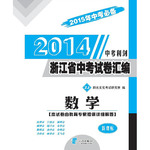题目内容
第三部分阅读理解(共20小题;每小题2分,满分40分)
Burns can be caused by fire, the sun, chemicals, heated objects or fluids, and electricity. They can be minor problems or life-threatening emergencies. Distinguishing a minor burn from a more serious burn involves determining the degree of damage to the tissues of the body. If
 you are not sure how serious the burn is, seek emergency medical help.
you are not sure how serious the burn is, seek emergency medical help.First-degree burns are those in which only the outer layer of skin is burned. The skin is usually red and some swelling (肿大) and pain may occur. Unless the burn involves large portions of the body, it can be treated at home.
Second-degree burns are those in which the first layer of skin has been bu
 rned through and the second layer of skin is also burned. In these burns, the
rned through and the second layer of skin is also burned. In these burns, the skin reddens intensely and blisters (水泡) develop. Severe pain and swelling also occur. Second-degree burns require medical treatment.
skin reddens intensely and blisters (水泡) develop. Severe pain and swelling also occur. Second-degree burns require medical treatment.Third-degree burns are the most serious and involve all layers of skin. Fat, nerves, muscles, and even bones may be affected. Areas may be charred black or appear a dry white. If nerve damage is substantial, there may be no pain at all. These burns require emergency medical attention.
Follow these steps when treating minor burns at home:
1) If the skin is not broken, run cool water over the burn for several minutes.
2) Cover the burn with a sterile (消过毒的) bandage or clean cloth.
3) Take aspirin to relieve any swelling or pain
 .
. Seek emergency treatment immediately for major burns. Before an emergency unit arrives, follow these steps:
1) Remove the person from the source of the burn (fire, electrical current, etc.).
2) If the person is not breathing, begin mouth-to-mouth resuscitation (人工呼吸) immediately.
3) Remove all clothing to stop further burning. If the clothing is stuck to the burn, do not attempt to remove it.
4) Cover the burned area with a cool, moist, sterile bandage or clean cloth. Do not place any creams, ointments (药膏) or ice on the burned area or break blisters.
5) Monitor the patient for signs of shock, and treat accordingly.
1. The underlined sentence in the first paragraph probably means “______”.
A. They can be dangerous if you don’t treat them seriously
B. They range from slight burns to deadly ones
C. They seldom cause deaths even if not treated properly
D. They usually cause deaths if not treated properly
2. Burns are divided into different degrees according to _______.
A. what kind of treatment they need
B. what kind of tissue of the body is damaged
C. whether there is pain and what degree of pain there is
D. which layer of skin is burned
3. From the passage we learn that _______.
A. if there is severe pain, then you need medical treatment
B. first-degree burns don’t require medical treatment
C. burns without pains can be treated at home
D. the larger the swelling is, the more serious it is
4. It can be inferred from the passage that ______.
A. you shouldn’t cover the burn with a bandage or cloth if it is severe
B. you shouldn’t move the person unless you know how to do first aid
C. you shouldn’t run cool water over the burn if the skin is broken
D. you shouldn’t place any wet towels on the burned area
5.where do you probably find the passage?
A.a fashion magazine B.a guide book
C.a book on first aid D.a section about culture in the newspaper
小题1:B
小题2:D
小题3:A
小题4:C
小题5:C
略

练习册系列答案
 中考利剑中考试卷汇编系列答案
中考利剑中考试卷汇编系列答案 教育世家状元卷系列答案
教育世家状元卷系列答案 黄冈课堂作业本系列答案
黄冈课堂作业本系列答案 单元加期末复习先锋大考卷系列答案
单元加期末复习先锋大考卷系列答案
相关题目
 B
B things
things ng and then be reduced to a thousand dollars.
ng and then be reduced to a thousand dollars.